#76: Carolina Gold Rice, Sea Island Cotton, and a lecture on South Carolina Food, Recipes, & Stories
For South Carolina history lovers far and wide! Enjoy weekly SC history and upcoming SC historical events
Welcome to the first 100 days of the South Carolina History Newsletter! My name is Kate Fowler and I live in Greenville, SC. I have a 9-5 job in marketing, and outside of work, have a deep love of history. I started this newsletter as a passion project to learn more about our beautiful state and build a community of fellow SC history lovers along the way! To establish a foundation for the newsletter and to grow my expertise on a wide variety of South Carolina historical topics, this past February I challenged myself to post 100 newsletters in 100 days. After this coming May 20th, the newsletter will become weekly. Thank you for joining the journey!
Dear reader,
Welcome to Newsletter #76 of The South Carolina History Newsletter! I’m so happy you’re here.
As always, I’d like to also extend a special welcome to the following new subscribers — woohoo! Thank you for subscribing.
tnpruitt56
dmanninginfay
johnsettle
byumom
nanapameast
I hope you enjoy today’s newsletter, and as always, please feel free to reply to this email with your ideas and suggestions on South Carolina history topics you’d like to learn more about. I’m only a click away.
Additionally, please join us & keep the conversation going by becoming a member of our SC History Newsletter Facebook Community here! I can’t wait to meet you.
And now, let’s learn some South Carolina history!
Yours truly,
Kate
(Writing from Greenville, SC)
Refer your friends to SC History Newsletter and win a “Best of South Carolina” gift basket!
Hi everyone! I am SO grateful and excited that there are now 478 free subscribers (and 15 paid!) for the SC History Newsletter. Y’all are amazing!! I have a goal for us to get to 1,000 subscribers by May 20th. Can you help me achieve my goal? And let’s make it fun by making it a contest!
HOW TO ENTER: By using the button below, you can share a unique link to the SC History Newsletter with your friends. Each time one of your friends signs up for the newsletter from your unique link, I can see on my dashboard!
WINNER: The person who refers the most people who sign up for the SC History newsletter will win the “Best of South Carolina” basket on May 20th! I will keep everyone posted on the “standings” as they come in.
THE PRIZE: The basket of goodies (valued at $100) will include iconic sweet & savory South-Carolina made goods — and a few other surprises as well!
Start sharing today! Thank you so much!
➳ Featured SC History Event
Please enjoy our featured SC History Event below, and click here to visit my SC History Events Calendar that organizes all the upcoming SC history events I have discovered. Please let me know if you’d like to add an event to the calendar! Reply to this email or send me a note at schistorynewsletter@gmail.com.
Saturday, May 11th from 3:00 - 5:00 pm | “David Shields and Kevin Mitchell: South Carolina Food, Recipes, & Stories” | Capstone Conference Center, Campus Room, University of South Carolina | Columbia, SC | FREE Admission
“This year's program is "David Shields and Kevin Mitchell: South Carolina Food, Recipes, and Stories."
9 a.m. to 12 noon: tours of the South Caroliniana Library on the Horseshoe
2 p.m.: 87th annual business meeting for all members of the Society
3 p.m.: free and open to the public — David Shields and Kevin Mitchell: South Carolina Food, Recipes, & Stories
David S. Shields is Carolina Distinguished Professor of the English Language and Literature Department at USC and the chair of the Carolina Gold Rice Foundation. He is the author of numerous books, including Southern Provisions: The Creation and Revival of a Cuisine and The Culinarians: Lives and Careers from the First Age of American Fine Dining, and the recipient of the Southern Foodways Alliance's Ruth Fertel Keeper of the Flame Award.
Kevin Mitchell is the first African American chef instructor at the Culinary Institute of Charleston in South Carolina. He has culinary arts degrees in occupational studies and management from the Culinary Institute of America and a master's degree in southern studies from the University of Mississippi, where he studied Southern foodways, the preservation of Southern ingredients, and the history of African Americans in the culinary arts. In 2020 Mitchell was named a S.C. Chef Ambassador.
In 2021 they released "Taste the South: South Carolina's Signature Foods, Recipes, and Their Stories" published by The University of South Carolina Press.”
➳ SC History Fun Facts
I.
Did you know that at the height of rice plantation cultivation in South Carolina, the legendary Carolina Gold rice was grown by enslaved workers specifically imported from Africa’s “Rice Coast”?
(Note from Kate: I’m inspired by our “Featured SC History Event” above to research and write about Carolina Gold rice and Professor David Shields. It makes me want to buy some Carolina Gold and cook it now. Perhaps I will include in my prize basket above! Inspired to also write about Sea Island Cotton in the next Fun Fact section below too)
Professor David Shields is the Carolina Distinguished Professor of the English Language and Literature Department at University of South Carolina and the chair of the Carolina Gold Rice Foundation. He is a devotee and ambassador for the legendary Carolina Gold Rice. He describes his love for the rice in a 2023 article from SeriousEats.com:
"It just had this really satisfying mouthfeel…The textural thing people told me about was there; so was the hazelnut thing. All I could think was, 'Boy, this tastes just like I want rice to taste: wholesome. Satisfying.' Part of my boyhood was spent in Japan eating very good rice. I had congee as my morning grain, instead of oatmeal or Cream of Wheat. So I have very strong associations with domestic harmony and tranquility and a bowl of rice porridge. When I tasted Carolina Gold, I had that same sense of satisfaction."
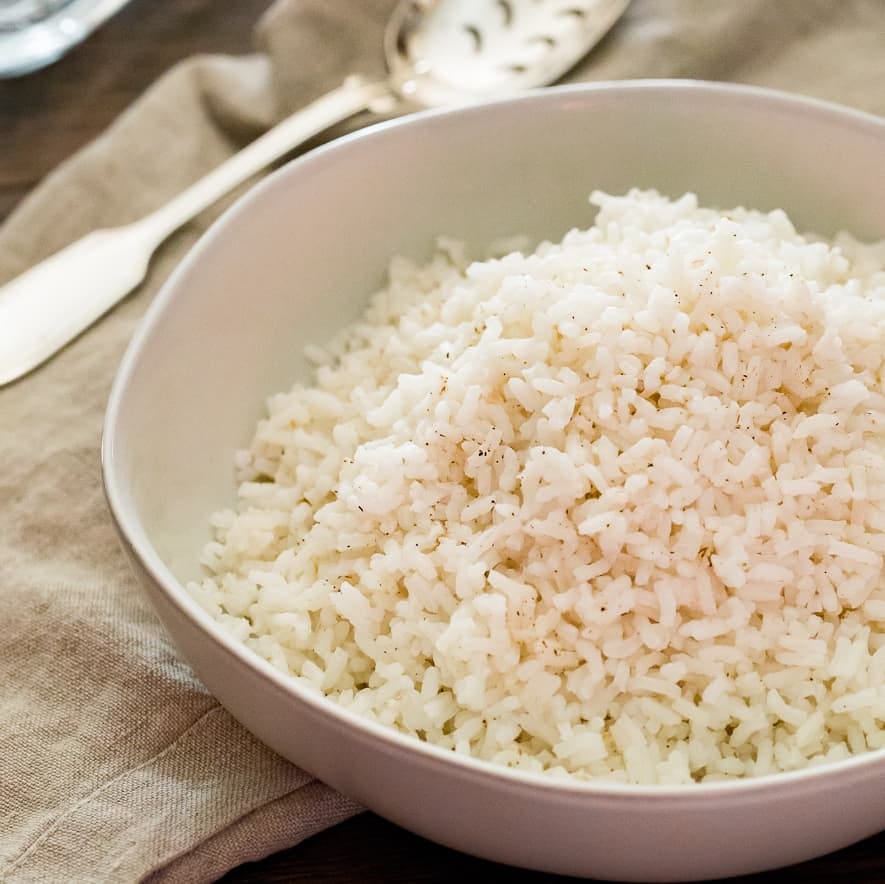
In its hey day, Carolina Gold Rice was once the “most popular rice grown in America.” Every year, huge amounts of Carolina Gold Rice were exported as far away as France, England, and Asia.
By 1820, about 100,000 acres were being grown across the tidewater areas of South Carolina, Georgia, and North Carolina — fueling the local cuisine and economies.
At the onset of the Civil War, “3.5 million of the 5 million bushels of rice produced in the United States were Carolina Gold rice.”
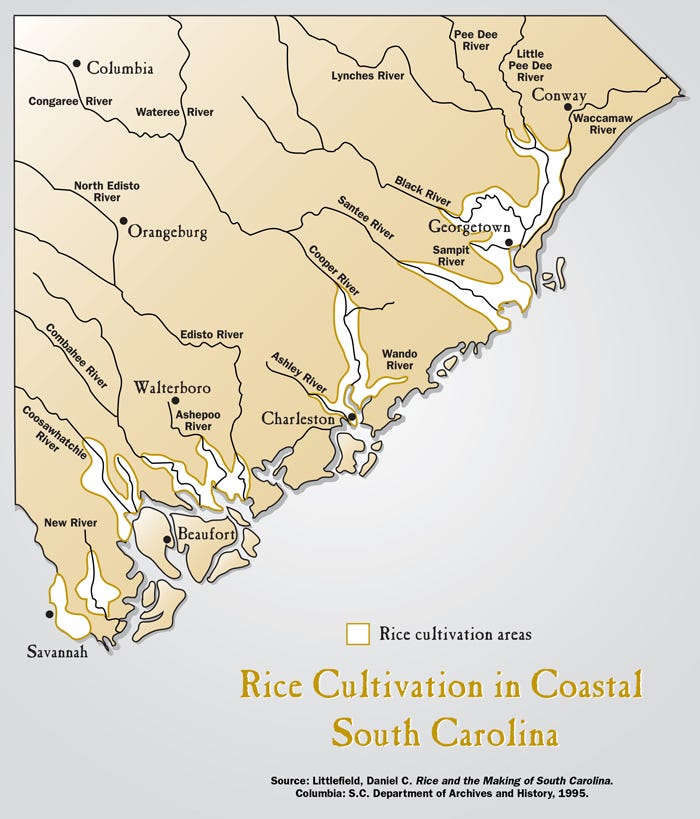
The rice economy — and as we have discussed before — was built upon the backs of enslaved laborers, who toiled in the hot sun and malarial tidelands for hours every day to plant and harvest the crop.
The success of the Carolina Gold grain made the demand for slave labor even higher. Slaves were taken from western Africa, the continent’s so-called “Rice Coast,” where people had been planting rice for thousands of years.
Some scholars have argued that early Carolina planters must have learned how to cultivate rice in swamps from their African slaves.
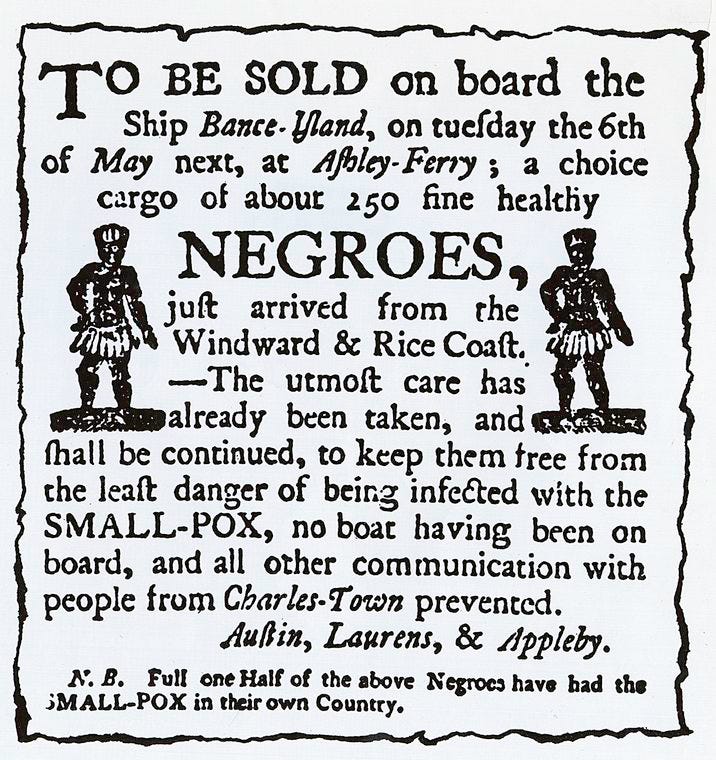
Lowcountry wealth was intertwined with rice for generations. From the 1720s to the early 1860s, no other commodity was remotely as important to the region. “Indigo, cotton, forest products, and manufacturing never came close to matching the riches that planters drew from their rice estates.”
Rice dominated the Lowcountry's economy for almost 200 years, influencing almost every aspect of life in the region from the early 18th century to the early 20th century.
The daily work of slaves on rice plantations was brutal. The Gullah Museum of South Carolina describes:
“Growing rice was back-breaking, dangerous, deadly work. The enslaved Africans had to remove huge cypress and gum trees, draining, clearing, and leveling immense wooded tidal swamps that were infested with poisonous snakes, rats, alligators, and disease carrying insects. They created vast coastal marine estuaries with rough tools, constructing massive hydrological systems—dams, dikes, canals, and floodgates—used to divert the massive amounts of river water needed to irrigate rice fields.”
Here are some illustrations from Harper’s Magazine from 1878 illustrating enslaved people working in the rice fields (Image Source: SC Sea Grant Consortium)
The process of harvesting rice included:
Threshing: using a “flail” tool, the enslaved workers would repeatedly beat stalks of cut rice to separate the rice grains from the long, wheat-like stalks. The grains of rice were then swept into a pile
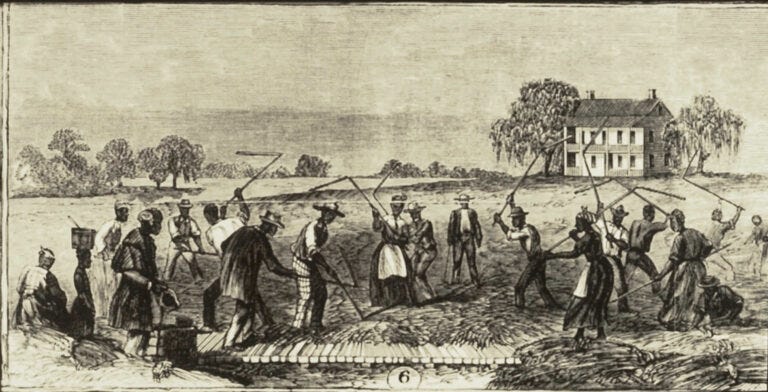
Winnowing or Fanner basket: Once the rice grains had been swept up, the female enslaved workers would put the grains into flat winnowing baskets and “gently toss them in the air.” The wind blew the chaff away and the rice fell back in the basket. If you recall from SC History Newsletter #38, the origin of the beautiful Gullah baskets here in South Carolina started with these winnowing baskets, which were made from sweet-smelling grasses that grew by the ocean.
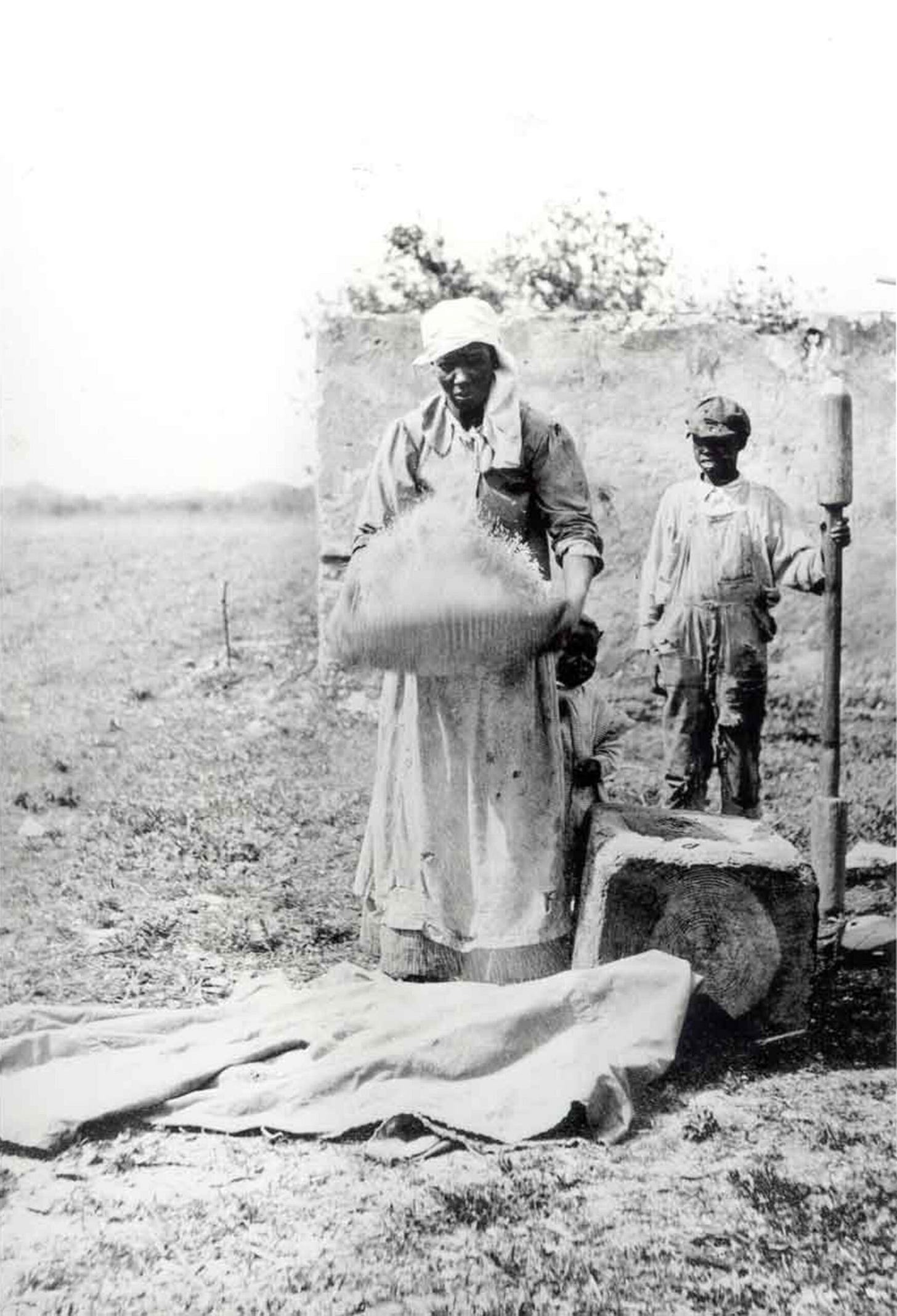
Mortar & Pestle: The rice grains were then placed in a mortar and pestle for, what was called “milling” or “whitening.” The pestle would loosen and crack the tough outer hull of the rice from the soft, edible center. Only small amounts would be processed at a time as it was important for the workers not to crack the rice grains. Broken grains were worth less money.
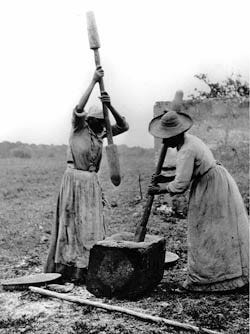
Carolina Gold, which was formerly called “golden seed” rice, first arrived at the port of Charleston in 1685 when “the captain of a merchant ship paid for some repairs with rice seed from Madagascar.”
Soon after, a man by the name of Dr. Henry Woodward planted some of the rice in his marshland, and was impressed not just by the flavor but by the tall golden stalks it produced. (A 1988 New York Times article describes them as "an elegantly shaped grass standing about five feet tall, each stem with some 200 golden grains clustered at the tip.")
Carolina Gold rice thrived as America's primary rice crop up until the Civil War, when the end of slavery, and a series of hurricanes, destroyed many of South Carolina's rice crops.
Professor Shields shared with Serious Eats: "Carolina Gold grew increasingly uncommercial with each passing decade of the twentieth century…Rice breeders paid homage to the strain, though...by making it a parent strain of the new higher-yield and shorter stock varieties created for industrial-scale production."
As the offshoot strains of the rice became more popular and commercial, pure Carolina Gold could barely be found in cultivation by the 1940s.
The rice lived on in many a Lowcountry family's memories (and many community cookbooks) for decades after.
Shields also shared:
"Because it was such a legendary rice, and because it had been central to the cuisine of the southern Atlantic coast, it never evaporated from cultural memory…Writers' rhapsodies over the taste of 'wild-rice-fed' ducks in old Carolina, the family cookbooks filled with pilaus, purloos, chicken bogs, and other dishes that specified 'Carolina Rice,' made residents wonder what had gone missing."
Then, as the memory of Carolina Gold was slowly drifting from public memory, in the mid-1980s an optometrist from Georgia helped give the crop a new beginning.
An avid hunter, Dr. Richard Schulze from Savannah had read tales of the “rice-fed ducks” mentioned by Professor Shields above, so he decided to plant some rice ponds on his South Carolina vacation property.
Next, he needed to get his hands on genuine Carolina Gold seeds. Dr. Schulze soon discovered that seed for the original plant was still being banked at the USDA's Rice Research Institute in Texas. After Schulze made an inquiry with the USDA, an agronomist named Richard Bollock, who shared his curiosity regarding the plant, propagated the seed for him, and sent him 14 pounds, which Schulze planted.
The following spring, Dr. Schulze harvested 64 pounds; by 1988, it was 10,000 pounds. Instead of selling the rice commercially, “Schulze donated it to the Savannah Association for the Blind, which sold it to support operations.”
Years later, a man named Glenn Roberts, founder of South Carolina–based Anson Mills, which specializes in organic heirloom grains — was impressed by Schulze's progress and wanted to make Carolina Gold available on a larger scale.
Roberts began work with Professor Merle Shepard of Clemson University and a team of food scientists to create a stronger, more disease-resistant variety of the rice.
Roberts and his team began growing this new variety of Carolina Gold in 1998 and now have organic rice fields in South and North Carolina, Georgia, and Texas.
Meanwhile, another company, called Carolina Plantation Rice, grows Carolina Gold on a historic plantation in Waccamaw, South Carolina.

The efforts of all Carolina Gold growers are supported by the Carolina Gold Rice Foundation, a nonprofit that works to improve the breeding and quality of Carolina Gold, formed by Roberts, Shields, and others in 2004.
Glenn Roberts also works with South Carolina horticulturist Rollen Chalmers who he described as the “quiet force behind the food revival of the Sea Islands and, in particular, the renewed interest in heirloom rices.”
Chalmers shared with CivilEats.com:
“I got a small rice field I started on Daufuskie Island five or six years ago, located at the Bloody Point Lighthouse that was built to keep ships coming out of Calibogue Sound from going into the Atlantic Ocean. A friend of mine bought it, put in a small vineyard, and I also replanted some indigo plants and sea island cotton. They grew a lot of cotton back in the 17th century and I wanted to show tourists how sea island cotton is a different, long-strand fiber that got sent back to England to make clothing for emperors.
I can see some Carolina Gold remnants on the embankments on that island. It makes you feel connected to [the past]. My ancestors were growing rice like that. The thing about it, they mainly grew it to live and survive. You would grow that rice, and it would take you through to the next year for food. It’s a real connection there, seeing how my grandparents were growing these different things. I had never seen it ’til I got into doing it myself.”
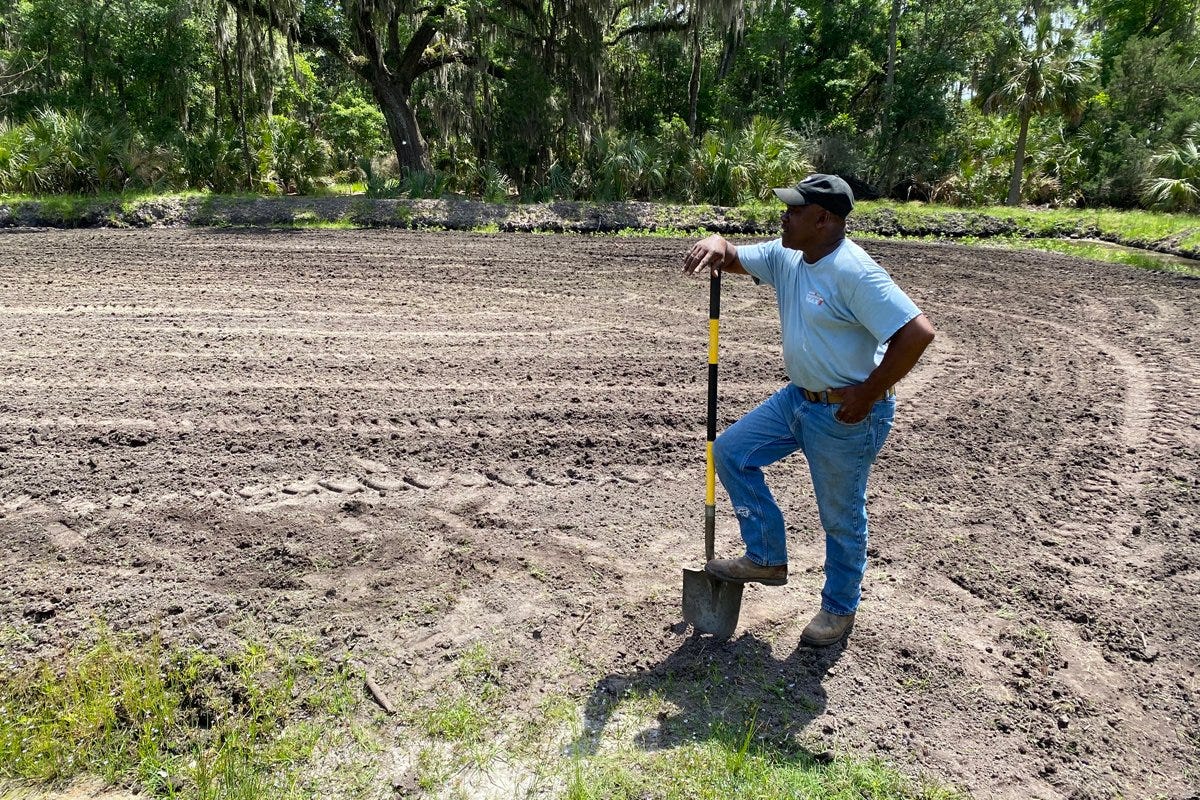
Please scroll to the bottom of this email for my source for this section
Have you eaten Carolina Gold Rice before? Tell us about your culinary experience with it!
II.
Did you know that Sea Island cotton, once grown on a large scale in the Sea Island plantations of South Carolina, is one of the rarest and most luxurious cottons ever made?
Legendary Sea Island cotton originally came to South Carolina from the British West Indies. Through careful seed selection, over time, it became recognized as “the finest cotton ever grown.”
The cotton “was prized by Kings and Queens,” including Queen Victoria.
In 1790, William Elliott produced the first commercial crop of Sea Island Cotton on Hilton Head Island.
As the crop evolved, the unique cotton was grown on plantations on James, Johns, Wadmalaw, Edisto, and St Helena islands, to name a few.
The invention of the cotton gin by Eli Whitney in 1793 increased the profitability of this growing industry even further.
Many island planters treasured their particular strain of cotton seed, “jealously guarding it and handing it down through the generations.”

“Over 500 million pounds of Sea Island cotton were produced and exported through Charleston to foreign markets, primarily England. For this, plantation owners were paid $3.6 billion (2018 value) in the first half of the 19th Century.”
Of course, the great wealth that came to these plantation owners was, like the Carolina Gold above, built on the backs of thousands of enslaved workers.
Slaveholders demanded that enslaved workers continually increase of the amount of cotton they picked. If workers failed to meet the daily quota, they were whipped or beaten.

During the Civil War, after the Battle of Port Royal on Hilton Head Island, plantation owners fled the area and “left over 10,000 slaves behind.”
Of the enslaved workers left behind, some freedmen planted their own Sea Island cotton on St. Helena Island during the war.
After the Civil War, there were attempts to grow Sea Island Cotton on several sea islands, but they failed.
Sea Island cotton, the gold standard of cotton, began to die off in the decades that followed — and the final blow was dealt with the arrival of the boll weevil beetle, “cotton’s only natural enemy,” which devastated cotton crops across the south in the early 20th century.
Thankfully, the boll weevil was eradicated in the 1970s and today, South Carolina is “weevil free.”
Today, products made with variations of Sea Island cotton are very luxurious and can still be found worldwide.
Every year, the world produces about “100 million bales of cotton and just 2 million of these are what is known as extra-long staple cotton, which has fibres longer than 34 millimetres; the longer the fibres the finer the fabric. Sea Island comes within that category but, at around just 150 bales a year, it is exceptionally rare.”
One British company, Sunspel, has been making clothing from Sea Island cotton since the 1800s, and explains that even James Bond himself wore Sea Island cotton:
“James Bond, like his creator, Ian Fleming, appreciated the good things in life; Sea Island cotton was one of them. Wherever they were in the world, Bond and Fleming favoured clothing made of this luxurious fabric. It was a wise choice: Sea Island cotton, with its fine, uniform texture and silky lustre, is one of the softest and most comfortable fabrics to wear next to the skin but it is also one of the most robust. Clothing made from the best Sea Island cotton is remarkably long lasting, which reflects Sunspel’s own ‘no waste luxury’ philosophy.”

Today, Sea Island cotton is “grown and handpicked by a few dedicated experts on small islands in the Caribbean, including Antigua, Barbados and Jamaica, which have the optimum mix of sunshine, rain and humidity.”
Once the annual crop has been picked and baled, it is sent to the very few expert spinners around the world who have the skills required to weave the material.
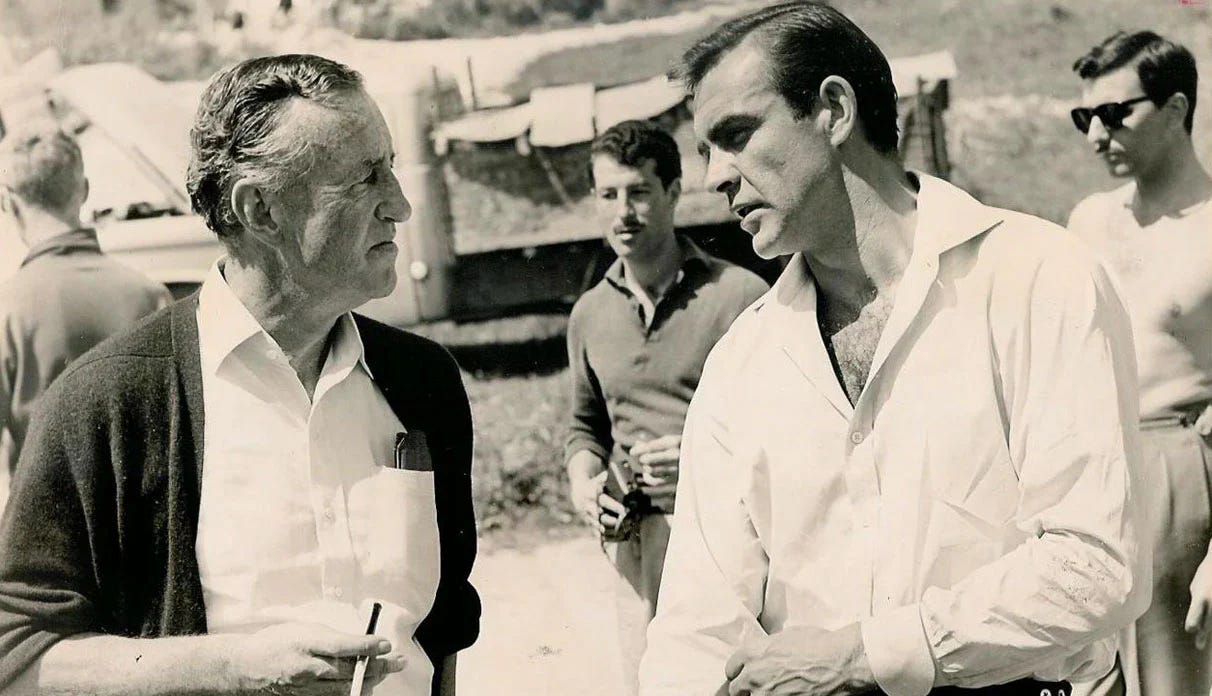
Please scroll to the bottom of this email for my sources for this section
Have you ever owned anything made from Sea Island cotton? How did it feel? We would love to know!
➳ Quote from an SC historical figure
“You Dare Not Make War On Cotton—No Power On Earth Dares Make War Upon It. Cotton Is King.”
—Said in an 1858 speech by South Carolina Senator James Henry Hammond (1807–1864) “to taunt northern sympathizers on the U.S. Senate floor”
Carolina Gold article sources:
Nargi, Lela. “How a South Carolina Farmer Is Adapting an Heirloom Rice to Withstand Climate Change.” Civil Eats, 16 Sept. 2020, https://civileats.com/2020/09/16/how-a-south-carolina-farmer-is-adapting-an-heirloom-rice-to-withstand-climate-change/. Accessed 26 Apr. 2024.
Pandolfi, Keith. “The Story of Carolina Gold, the Best Rice You’ve Never Tasted.” Serious Eats, Serious Eats, 26 May 2016, https://www.seriouseats.com/carolina-gold-heirloom-rice-anson-mills. Accessed 26 Apr. 2024.
“Rice Cultivation.” Projects of History – A Compendium of Research and Community Projects at the University of North Florida, https://history.domains.unf.edu/floridahistoryonline/projects-proj-b-p-html/plantations-plantations-rice_cultivation-htm/. Accessed 26 Apr. 2024.
Tibbets, John. “Riches to Ruin: Pharaohs of the New World.” S.C. Sea Grant Consortium, 25 Oct. 1999, https://www.scseagrant.org/riches-to-ruin-pharaohs-of-the-new-world/. Accessed 26 Apr. 2024.
“Using Rice Plantation Tools.” National Museum of American History, 2002, https://amhistory.si.edu/ourstory/pdf/slavelife/slave_ricetools.pdf. Accessed 26 Apr. 2024.
Sea Island Cotton article sources:
“Finest Cotton in the World: Sea Island.” Finest Cotton in the World: Sea Island, https://www.seaisland-cotton.com/#history. Accessed 26 Apr. 2024.
“Sea Island Cotton - Dataw Historic Foundation.” Dataw Historic Foundation, 16 Oct. 2019, https://www.datawhistory.org/dataw-island-history/sea-island-cotton/. Accessed 26 Apr. 2024.
“South Carolina Cotton Museum.” South Carolina Cotton Museum, http://www.sccotton.org/6701.html. Accessed 26 Apr. 2024.
“The Story of Sea Island Cotton Sunspel.” Sunspel US, https://us.sunspel.com/blogs/the-journal/the-story-of-sea-island-cotton. Accessed 26 Apr. 2024.
“The History Of Sea Island Cotton.” Visit Beaufort South Carolina, 23 July 2022, https://www.beaufort.com/the-history-of-sea-island-cotton/. Accessed 26 Apr. 2024.
I always want to improve my work. Answer the poll below to give me your review of today’s newsletter. I also welcome your suggestions for new content! Simply reply to this email with your ideas. Thank you!




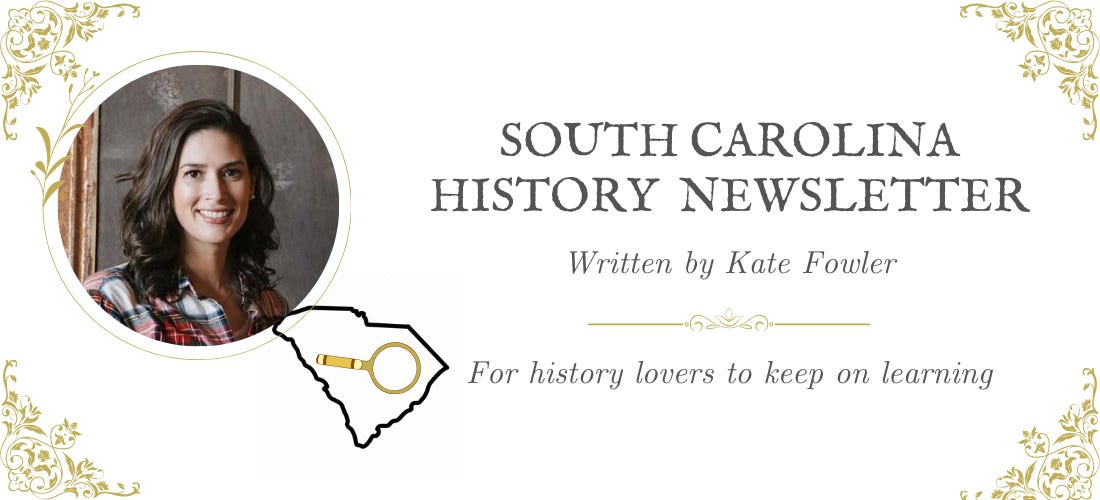





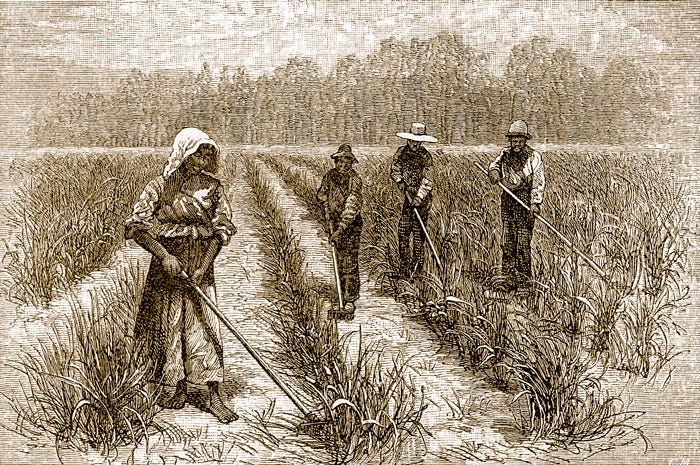

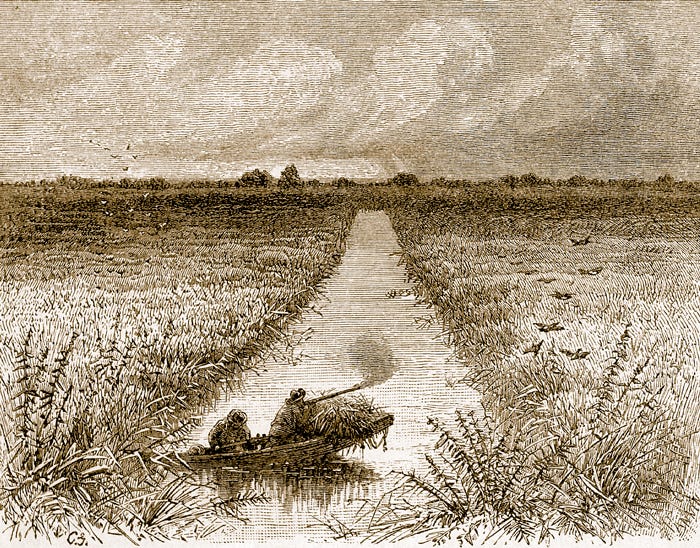




Great article. Our history here is so rich, and endless stories are yet to be told.